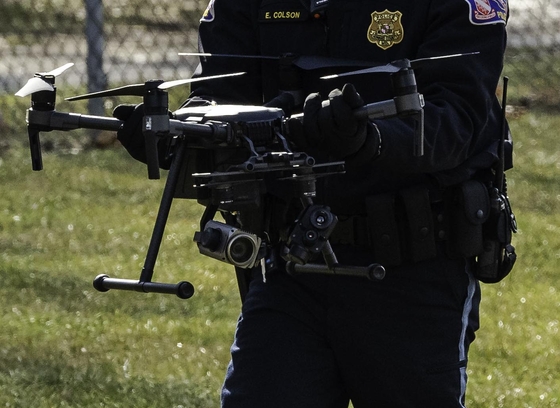About
Drones are used by police departments around the country for various public safety missions, including locating missing people, providing aerial views during crisis incidents, searching for suspects avoiding apprehension, taking photos of collision and crime scenes, and assisting in other public safety efforts within a defined perimeter.

FAQs
What are the drone usage restrictions to address privacy considerations?
The HCPD follows public guidelines from the ACLU to ensure the community can benefit from drone technology without privacy concerns.
- Drones MAY NOT be used for mass surveillance that could violate First Amendment-protected activities.
- Drones MAY be used:
- when there is an emergency situation in a defined area in which individuals’ lives and safety are at risk, such as crisis situations, missing persons, fires or other potentially dangerous scenarios; or
- when there are specific and articulable grounds to believe that the drone will collect evidence relating to criminal activity; or
- when there is a signed search warrant issued by a judge for constitutionally-protected activities.
Do police need a warrant to use a drone?
Law enforcement agencies are required to obtain a search warrant when using drones for any constitutionally-protected areas under Fourth Amendment protections from unreasonable search and seizure.
Are images taken from the drone retained by the police?
Images are not retained unless there is reasonable suspicion that they contain evidence of criminal activity or are relevant to an ongoing investigation or pending criminal trial. Images that do not possess any evidentiary value will be deleted.
Who will be operating the drones?
Drones will be operated by officers who will stay in their current assignments and respond to incidents when a drone is needed. They have been trained and are certified remote pilots, as required by the FAA. This is commonly referred to as a “Part 107” certification (Title 14 of the Code of Federal Regulations, Part 107).